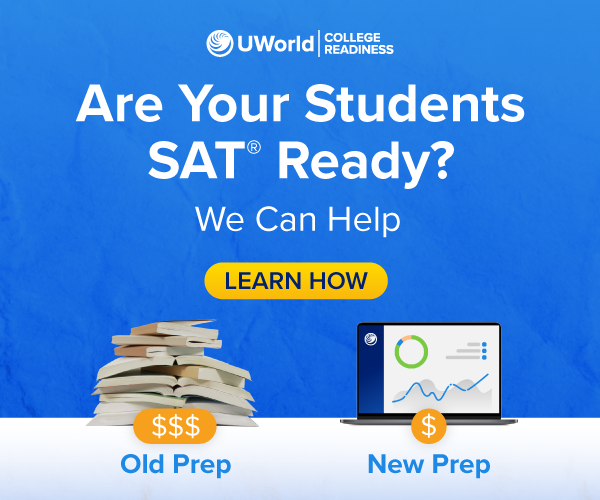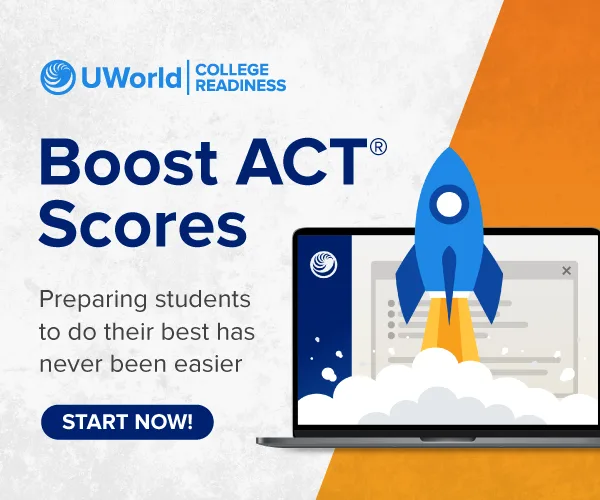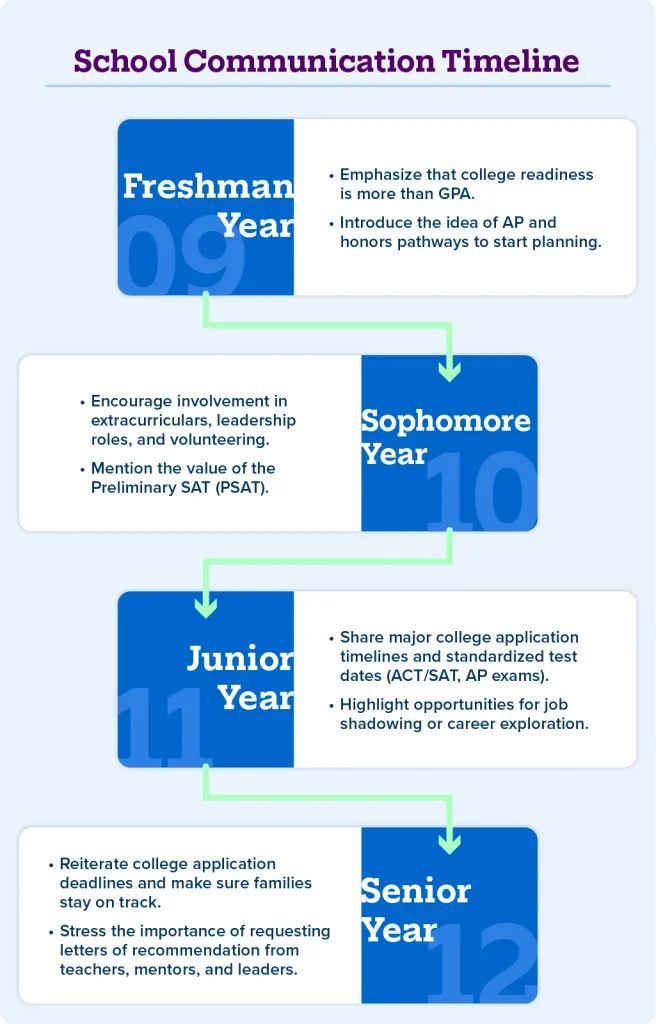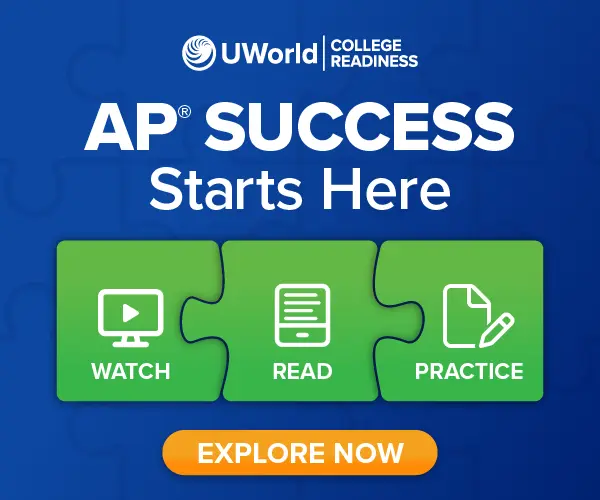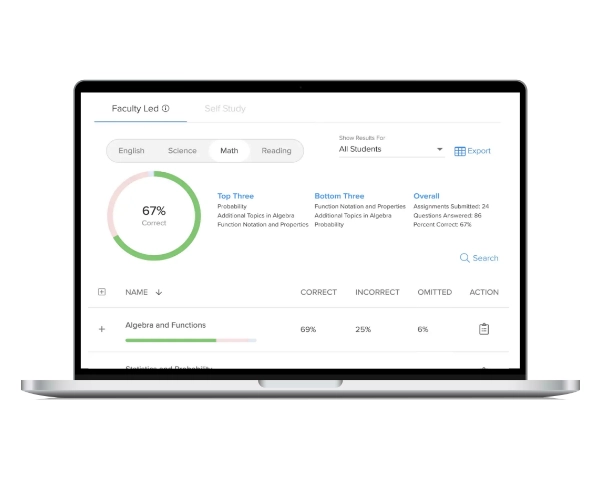The journey to college is far easier for students when their parents play a purposeful role. While schools emphasize academic benchmarks, educators sometimes don't know how to provide parents with the right roadmap, leaving families unsure where to begin.
Discover what parents want to know about college readiness and what you can do to meet those needs early, clearly, and consistently.
Why Parents Matter in the College Readiness Journey
Parental involvement is one of the strongest predictors of a student's educational aspirations and success. They are motivators and financial strategists. Equally important, parents are emotional anchors, offering comfort amidst the uncharted waters of their child's academic life.
Unfortunately, not all parents have equal access to vital information about college readiness. Some are first-generation parents who did not encounter the U.S. education system, while others didn't attend college at all. Additionally, many simply had a drastically different experience compared to modern high school students. When equipped with keen insights, you can support college planning for parents to help them become stronger advocates — and that starts with addressing common misconceptions.1
Common Misconceptions About College Readiness
Many parents' beliefs about college readiness are untrue. You can share guidance to help dispel these common misconceptions.
Misconception #1: College Readiness Means Just Getting Good Grades
Strong academics are important, but they're not the whole picture. Acknowledge that readiness also means having a host of necessary competencies.
With a strong understanding of these skills, you can effectively strategize how to help students develop and refine them during their high school years.2
Misconception #2: Only Students on the Advanced Placement® (AP®) Track Are College-Bound
Advanced coursework can be helpful, but college pathways are diverse. Honors classes, work-based learning programs, career and technical education (CTE), and electives aligned with a student's interests contribute to a high likelihood of college success. The best college-planning guide for parents drives home the idea that there is no singular path leading to readiness.3,4,5
Misconception #3: AP, SAT® and ACT® Exams Are Paper Tests
While many parents may have taken these exams on paper, today's students face fully digital or hybrid testing models. Students need strong digital literacy skills to succeed on these tests and those administered in college. That way, they can concentrate on the exam content instead of technical challenges. Emphasizing this shift helps parents better prepare their children for the modern testing environment.
Misconception #4: SAT and ACT Scores Are All That Matter
Many colleges are now test-optional or test-flexible, meaning students can decide to submit scores if they believe they'll enhance their admissions package. A number of schools went test-optional during the pandemic, but rising concerns over grade inflation have led many to reinstate standardized test requirements. Conversely, other institutions are test-blind. Under this policy, colleges make admissions decisions not based on any test score but on course rigor, GPAs, extracurriculars and leadership, recommendation letters, and personal qualities.6
When you clarify this holistic admissions process, families can adjust their approach based on school requirements and student strengths.
Misconception #5: Senior Year Is the Time to Plan for Finances
The most effective financial planning begins well before 12th grade. School counselors can help provide budgeting insights and emphasize key actions for families based on the school year.
| School Year | Key Action |
|---|---|
|
9th grade* |
Mention opportunities such as grants, scholarships, and the value of researching both in-state and out-of-state college costs.7 |
|
10th grade* |
Stress the importance of organizing prospective institutions into lists.7 |
|
11th grade* |
Point out that net price calculators (NPCs) can be helpful in determining cost estimates for desired colleges or training programs.8,9 |
|
12th grade (early fall)* |
Encourage parents to submit the Free Application for Federal Student Aid (FAFSA®) and the College Scholarship Service (CSS®) Profile.8 |
|
12th grade (late fall)* |
Reinforce the value of itemizing costs per institution (e.g., tuition, room/board, travel expenses, books, and additional program fees).8 |
|
12th grade (early spring)* |
Call attention to the FAFSA submission summary, including the Student Aid Index (SAI).10 |
|
12th grade (late spring)* |
Share insights into managing financial award letters and maintaining eligibility (e.g., how to accept the award and fill out additional forms).11 |
*Encouraging families to apply for grants and scholarships throughout high school maximizes their chances of receiving free aid.
Misconception #6: The School Will Take Care of Everything
Boosting college readiness often requires more than the resources provided by institutions. You can encourage parents to play an active role by promoting student involvement in extracurricular activities and leadership opportunities while offering emotional support. After all, college is a major life transition that calls for emotional resilience as much as academic strength. These intentional efforts reinforce that college readiness is a shared responsibility.12
Best Practices for Engaging Parents in College Readiness Conversations
To truly support families, meet them where they are linguistically, culturally, and logistically. There are many ways to achieve this — all of which can be thoughtfully integrated.
Bilingual and Culturally Relevant Workshops
By hosting sessions in families' primary languages and including culturally responsive content, you can help equip parents with valuable knowledge and skills to boost college readiness. This college-planning guide for parents might include culturally responsive content like navigating college admissions as a first-generation student or highlighting scholarship opportunities for students with specific backgrounds.13
Sharing Student and Alumni Success Stories
Spotlighting successful local graduates helps parents visualize their child's educational path more clearly. They'll see evidence that the right approach prepares students for academic and professional success.14
Mobile-Friendly Tools and Text Reminders
Given many families' busy schedules, tasks like checking emails may fall by the wayside. To help close that communication gap, incorporate text message reminders about key deadlines or events. Studies suggest this is one of the best ways to share information and keep parents updated.15
Evening or Virtual Info Sessions
Working parents appreciate flexible scheduling. Host evening sessions and record them to help families revisit key information at their convenience. The most effective sessions are inclusive, frequent, and easily accessible.16
Partnerships with Colleges and Employers
Conferences that include panels of school leaders and workforce representatives can significantly improve college planning for parents. These functions are made possible through strong partnerships.17
School Communication Timeline
Weave key conversations into each stage of a student's high school journey to further strengthen college readiness efforts. The following timeline highlights academic and personal preparedness, giving you a framework to help parents stay engaged throughout their child's education.18,19
A Collaborative Approach to College Readiness
Parents are deeply invested in their children's success, but to truly support college readiness, they need structured, honest, and timely communication from schools. While the educational landscape constantly evolves, it becomes more navigable when schools dispel misconceptions and share proven strategies. The result? Parents remain engaged, and students are better equipped to thrive in higher education.
Frequently Asked Questions (FAQs)
How can teachers communicate with parents about college readiness?
Schools can support parents through bilingual workshops, text reminders, and alumni success stories that make the journey feel clearer and more achievable. See Best Practices for Engaging Parents in College Readiness Conversations.
How early should teachers encourage parents to start planning finances for college?
Having that conversation at the beginning of 9th grade gives families more time to explore grants, scholarships, and savings opportunities. See Misconception #5: Senior Year Is the Time to Plan for Finances.
How can teachers educate parents about saving financially for college?
Encouraging early planning, realistic budgeting, and exploring diverse aid options (scholarships, grants, work-study programs, etc.) helps reduce financial pressure.
What instructional resources help track college readiness?
UWorld’s Online Preparation for the SAT and ACT and Courses for AP offer diagnostic insights, targeted practice, and feedback.
References
- Sempeles, E., & Cui, J. (2024). Parent and family involvement in education: 2023 (NCES 2024-113), National Household Education Surveys Program, First look–Summary. U.S. Department of Education, Institute of Education Sciences, National Center for Education Statistics. https://nces.ed.gov/pubs2024/2024113_Summary.pdf
- Selagea, M. (n.d.). The 5 must-have college readiness skills. OneGoal. https://www.onegoal.org/about/blog/the-5-must-have-college-readiness-skills
- Hamlin, D. (2025). Parental involvement opportunities and student learning outcomes: Evidence from U.S. high schools (EdWorkingPaper No. 25-1269). Annenberg Institute at Brown University. https://edworkingpapers.com/sites/default/files/ai25-1269.pdf
- College in High School Alliance & Advance CTE. (2022). Aligning dual enrollment and career pathways. https://collegeinhighschool.org/wp-content/uploads/2022/10/CHSA_AdvanceCTE_Two-Pager_FINAL.pdf
- Colorado Department of Education. (n.d.). Dropout prevention and student re-engagement: Framework and pathways research. https://www.cde.state.co.us/dropoutprevention/dpframeworkpathwaysresearch
- CollegeData. (2024, March 4). Test-optional vs. test-blind: What's the difference? https://www.collegedata.com/resources/prepare-and-apply/test-optional-test-blind-whats-the-difference
- Broward County Public Schools. (n.d.). Academic timeline for college planning. https://fl02219191.schoolwires.net/cms/lib/FL02219191/Centricity/Domain/3870/Academic_Timeline_for_College_Planning.pdf
- Principal Financial Group. (n.d.). Financial checklist: Prepare your kid for college. https://www.principal.com/individuals/build-your-knowledge/financial-checklist-prepare-your-kid-college
- U.S. Department of Education. (n.d.). Net price calculator center. College Affordability and Transparency Center. https://collegecost.ed.gov/net-price
- Understanding FAFSA. (2024). Student aid index: What is a good SAI? https://understandingfafsa.org/student-aid-index-what-is-a-good-sai
- College Board. (n.d.). Understanding your financial aid award offers. BigFuture. https://bigfuture.collegeboard.org/pay-for-college/get-help-paying-for-college/scholarships-grants-institutional-aid/understanding-your-financial-aid-award-offers
- Washington Student Achievement Council. (2023). Family engagement in pathway decisions: Research spotlight. https://wsac.wa.gov/sites/default/files/WSAC.ResearchSpotlight.FamilyEngagementInPathwayDecisions.pdf
- WIDA. (2019). Focus on: Language-focused family engagement. Board of Regents of the University of Wisconsin System. https://wida.wisc.edu/sites/default/files/resource/FocusOn-Language-Focused-Family-Engagement.pdf
- Seldin, T. (2023, June 21). How alumni stories can transform your Montessori school's enrollment marketing. LinkedIn. https://www.linkedin.com/pulse/how-alumni-stories-can-transform-your-montessori-schools-tim-seldin-k56pe
- Snell, E. K., Hindman, A. H., & Wasik, B. A. (2020). Language-focused family engagement in early childhood: Exploring the roles of home literacy environment and parent confidence. Early Childhood Research Quarterly, 52, 556–567. https://sites.temple.edu/texttotalk/files/2020/03/Snell-Hindman-Wasik-_2020-ECDC.pdf
- Washington Student Achievement Council. (2023). Family engagement in pathway decisions: Research spotlight. https://wsac.wa.gov/sites/default/files/WSAC.ResearchSpotlight.FamilyEngagementInPathwayDecisions.pdf
- Alanís, I., & Rodríguez-García, G. (2020). Culturally responsive teaching and reflection in dual language classrooms: Engaging Mexican American mothers in dialogue. Early Childhood Education Journal, 48, 41–51. https://files.eric.ed.gov/fulltext/EJ1257633.pdf
- Graduate Programs for Educators. (2021, January 13). How to get teachers to prepare students for college and career readiness. https://www.graduateprogram.org/blog/how-to-get-teachers-to-prepare-students-for-college-and-career-readiness
- Campus Explorer. (n.d.). High school sophomore timeline and checklist. https://www.campusexplorer.com/student-resources/checklist-for-high-school-sophomores/


